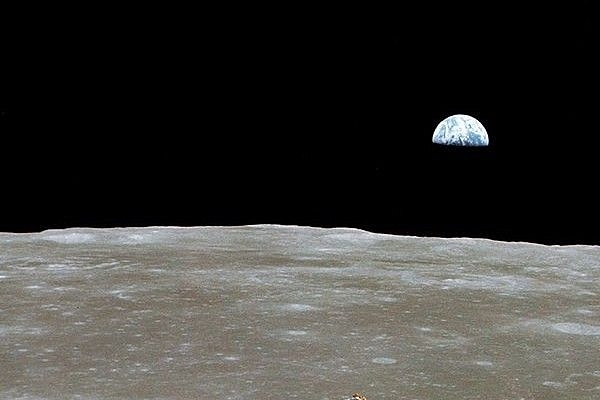Insta
Can’t Spot The Moon In The Night Sky? Wait, There’s Two More

Over the Moon, with a half-Earth in the background. (NASA/Newsmakers)
Astronomers have always suggested the possibility that Earth may have more than one moon. After years of research, Hungarian astronomers and physicists say they have finally confirmed the existence of two Earth-orbiting “moons” entirely made of dust, National Geographic has reported.
The research team has captured snapshots of the mysterious clouds lurking just 4,02,336 km away which is almost the same distance as the moon, they said in the Monthly Notices of the Royal Astronomical Society.
Researchers earlier had inferred the presence of multiple natural companions to Earth, but the dust clouds weren’t until 1961. Ever since Polish astronomer Kazimierz Kordylewski discovery of their existence, the topic has been widely debated.
“The Kordylewski clouds are the toughest objects to find, and though they are as close to Earth as the moon, are largely overlooked by researchers in astronomy,” says study co-author Judit Slíz-Balogh, an astronomer at Eötvös Loránd University in Hungary.
The new findings say that each Kordylewski cloud is probably equal to 30 by 20 lunar disks or 15 by 10 degrees wide in the night sky. This translates to an area in space about 104610 by 72420 km in actual size (nearly nine times wider than Earth).
Support Swarajya's 50 Ground Reports Project & Sponsor A Story
Every general election Swarajya does a 50 ground reports project.
Aimed only at serious readers and those who appreciate the nuances of political undercurrents, the project provides a sense of India's electoral landscape. As you know, these reports are produced after considerable investment of travel, time and effort on the ground.
This time too we've kicked off the project in style and have covered over 30 constituencies already. If you're someone who appreciates such work and have enjoyed our coverage please consider sponsoring a ground report for just Rs 2999 to Rs 19,999 - it goes a long way in helping us produce more quality reportage.
You can also back this project by becoming a subscriber for as little as Rs 999 - so do click on this links and choose a plan that suits you and back us.
Click below to contribute.
Latest